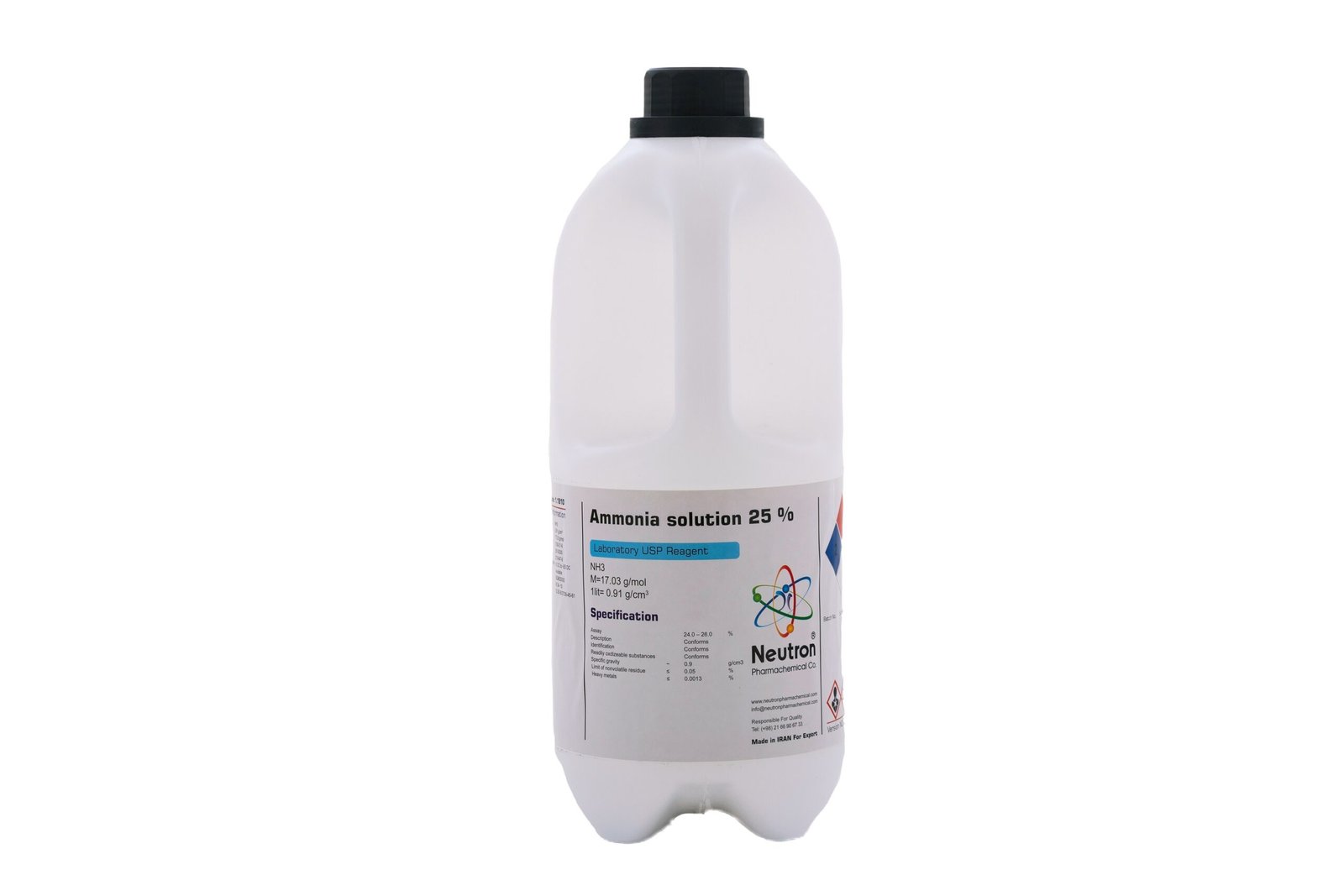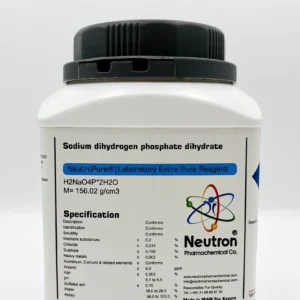Ammonia solution 25%
| Formula | NH3 |
| Density | 0.91 g/cm3 |
| Molar mass | 17.03 g/mol |
| CAS number | 1336-21-6 |
| HS code | 28142000 |
| EC number | 215-647-6 |
| Storage (temprature) | +2 OC to +25 OC |
| SDS | Available |
| RTECS | BQ9625000 |
| R phrase | R 34 – 50 |
| S phrase | S 26-36/37/39-45-61 |
| Assay | 24.0 – 26.0 | % | |
| Description | Conforms | ||
| Identification | Conforms | ||
| Readily oxdizeable substances | Conforms | ||
| Specific gravity | ~ | 0.9 | g/cm3 |
| Limit of nonvolatile residue | ≤ | 0.05 | % |
| Heavy metals | ≤ | 0.0013 | % |
Ammonia solution 25% is a concentrated aqueous solution of ammonia gas (NH₃) in water. It is a clear, colorless liquid with a pungent odor and is commonly used in industrial, laboratory, and household applications as a cleaning agent, chemical reagent, and pH adjuster.
🏭⚗️ Production
Ammonia solution is produced by dissolving anhydrous ammonia gas in water under controlled conditions. The concentration is expressed as a percentage by weight, with 25% being a common industrial grade.
🔬 Properties
Ammonia solution 25% is strongly alkaline, with a pH around 11–12. It is corrosive and releases ammonia gas when exposed to air. The solution is miscible with water and reacts with acids to form ammonium salts. It is volatile and must be stored in sealed containers to prevent loss of ammonia.
🧪 Applications
• Industrial uses: Employed in water treatment, textile processing, and metal cleaning.
• Laboratory: Used as a buffer, complexing agent, and for pH adjustment in analytical chemistry.
• Household cleaning: Found in some glass cleaners and multi-purpose cleaning products (in lower concentrations).
• Agriculture: Occasionally used in fertilizer formulations or as a nitrogen source.






